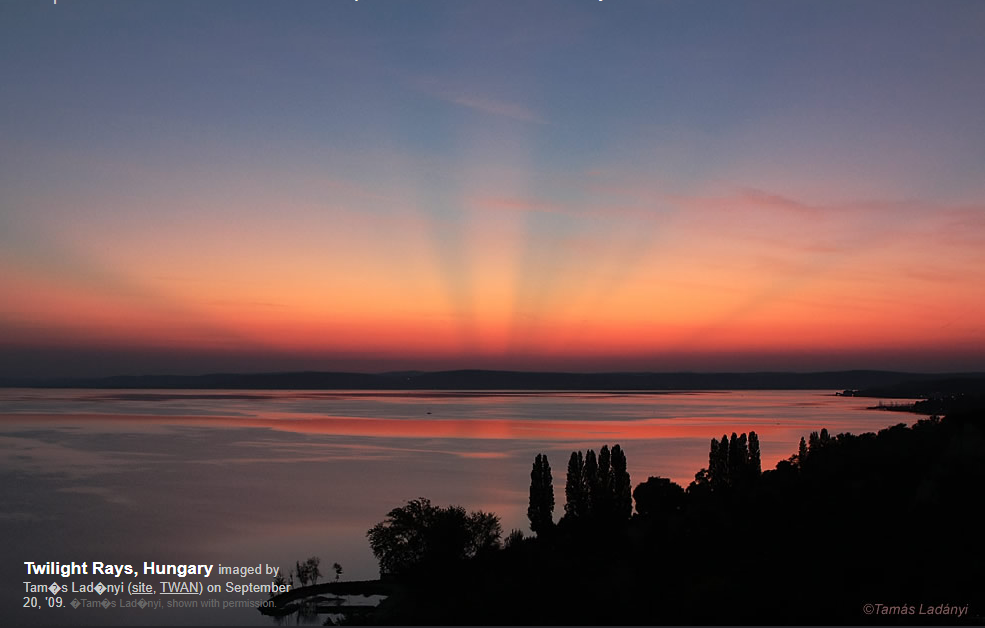Twilight Rays
Twilight Rays: A Phenomenon of Nature
Twilight rays, also known as crepuscular rays, are a breathtaking atmospheric optical phenomenon that occurs during twilight hours. These rays of light, often seen radiating from the position of the setting or rising sun, create a mesmerizing display in the sky. The interplay of light and shadow gives rise to a stunning spectacle that captivates observers around the world. In this article, we will delve deeper into the science behind twilight rays and explore the factors that contribute to their formation.
The Science Behind Twilight Rays
Twilight rays are formed as a result of the scattering of sunlight by atmospheric particles such as dust, water droplets, and aerosols. When the sun is near the horizon during sunrise or sunset, its light has to pass through a greater portion of the Earth's atmosphere. This longer path causes the shorter blue and green wavelengths of light to scatter more, while the longer red and orange wavelengths continue to travel in a more direct path. As a result, the scattered blue and green light becomes more visible, creating the illusion of rays emanating from the sun.
Factors Influencing Twilight Ray Formation
Several factors contribute to the formation and appearance of twilight rays. These include:
-
Atmospheric Conditions: The presence of dust, haze, or other particulate matter in the atmosphere can enhance the visibility of twilight rays. These particles serve as scattering agents, causing the light to scatter in various directions and giving rise to the distinct ray-like pattern.
-
Topography: The presence of mountains, hills, or other elevated features on the horizon can shape the path of sunlight, resulting in dramatic variations in the intensity and direction of twilight rays.
-
Clouds: The presence of clouds can either obstruct or enhance the visibility of twilight rays. When clouds are present, they can act as a canvas on which the rays are projected, creating a stunning interplay of light and shadow.
-
Sun's Position: The angle at which the sun is positioned relative to the observer also influences the appearance of twilight rays. When the sun is closer to the horizon, the rays appear longer and more pronounced, adding to the ethereal beauty of the phenomenon.
Types of Twilight Rays
Twilight rays can manifest in various forms, each with its own unique characteristics. Some of the notable types of twilight rays include:
-
Crepuscular Rays: These are the most commonly observed type of twilight rays, appearing as parallel beams radiating from the position of the sun.
-
Anticrepuscular Rays: Anticrepuscular rays are a rare phenomenon where the rays appear to converge at a point opposite to the sun, creating an illusion of rays extending from the horizon towards the observer.
-
Jacob's Ladder: Jacob's Ladder refers to a specific type of twilight ray formation where the rays appear as vertical columns or curtains stretching from the horizon towards the sky.
-
Buddha's Fingers: Buddha's Fingers are a unique variation of twilight rays that resemble elongated, finger-like projections extending from the sun's position.
Capturing the Beauty of Twilight Rays
To capture the mesmerizing beauty of twilight rays, photography enthusiasts often employ various techniques. Some tips for capturing stunning images of this phenomenon include:
- Use a wide-angle lens to capture a larger portion of the sky and enhance the sense of scale.
- Experiment with different exposure settings to balance the brightness of the rays with the surrounding landscape.
- Incorporate interesting foreground elements, such as silhouettes or natural features, to add depth and visual interest to the composition.
- Plan your photography session around sunrise or sunset to maximize your chances of witnessing and capturing twilight rays.
Appreciating Nature's Masterpiece
Twilight rays serve as a reminder of nature's awe-inspiring beauty and the intricate workings of the atmosphere. As the sun dips below the horizon, these rays of light create a captivating spectacle that leaves observers in awe. Whether witnessed firsthand or captured through the lens of a camera, the ephemeral nature of twilight rays reminds us of the transient and magical qualities of our world.
So, the next time you find yourself outdoors during the twilight hours, take a moment to look up and marvel at the celestial masterpiece unfolding above. Twilight rays are a testament to the wonders of our atmosphere, reminding us of the incredible phenomena that surround us every day.

Twilight Rays, Hungary imaged by Tam�s Lad�nyi (site, TWAN) on September 20, '09. �Tam�s Lad�nyi, shown with permission.
"I observed amazing crepuscular rays over Lake Balaton about 30 minutes after sunset. It was caused by the range of Bavarian Alps in Germany. Photo details: Canon 450D, Canon 24-70 L objective at 24 mm, 1/25 sec, iso 800, f/5,6 Location: Balatonakarattya, Hungary."
Note: this article has been automatically converted from the old site and may not appear as intended. You can find the original article here.
Reference Atmospheric Optics
If you use any of the definitions, information, or data presented on Atmospheric Optics, please copy the link or reference below to properly credit us as the reference source. Thank you!
-
<a href="https://atoptics.co.uk/blog/twilight-rays-2/">Twilight Rays</a>
-
"Twilight Rays". Atmospheric Optics. Accessed on November 26, 2024. https://atoptics.co.uk/blog/twilight-rays-2/.
-
"Twilight Rays". Atmospheric Optics, https://atoptics.co.uk/blog/twilight-rays-2/. Accessed 26 November, 2024
-
Twilight Rays. Atmospheric Optics. Retrieved from https://atoptics.co.uk/blog/twilight-rays-2/.